
Journal of Orthopaedic Translation
Scope & Guideline
Advancing orthopedic knowledge for a healthier tomorrow.
Introduction
Aims and Scopes
- Musculoskeletal Disorders Research:
The journal explores a wide range of musculoskeletal disorders including osteoarthritis, osteoporosis, and tendon injuries, aiming to improve understanding and treatment of these conditions. - Biomaterials and Tissue Engineering:
Research on biomaterials for bone and cartilage repair is a significant focus, including the development of scaffolds and other innovative materials that facilitate tissue regeneration. - Stem Cell and Regenerative Medicine:
The journal publishes studies on the use of stem cells for the treatment of orthopaedic conditions, highlighting their potential in promoting healing and regeneration. - Molecular and Cellular Mechanisms:
Investigations into the molecular pathways and cellular mechanisms involved in bone and cartilage health and disease are central to the journal's scope, providing insights for therapeutic targets. - Clinical Translation of Research:
The journal emphasizes the importance of translating laboratory findings into clinical practice, providing a platform for studies that bridge the gap between research and patient care. - Innovative Surgical Techniques:
Papers discussing novel surgical approaches and technologies in orthopaedics, including minimally invasive techniques, are regularly featured, reflecting a commitment to advancing surgical practice.
Trending and Emerging
- Regenerative Medicine and Stem Cell Therapy:
An increasing number of studies are focusing on regenerative medicine, particularly the use of stem cells for the treatment of various orthopaedic conditions, emphasizing their potential for healing and recovery. - Therapeutic Applications of Exosomes:
Research into exosomes derived from various cell types is gaining traction, exploring their roles in promoting healing and their potential as therapeutic agents in orthopaedics. - Advanced Biomaterials Development:
There is a growing trend towards the development of advanced biomaterials, including 3D-printed scaffolds and bioactive materials that enhance tissue regeneration and integration. - Molecular Targeting and Signaling Pathways:
A surge in studies targeting specific molecular pathways involved in musculoskeletal disorders is observed, aiming for more precise therapeutic interventions. - Innovative Surgical Techniques and Technologies:
Emerging surgical techniques, particularly minimally invasive approaches and robotic-assisted surgeries, are increasingly represented, showcasing advancements in surgical practice. - Personalized Medicine Approaches:
The trend towards personalized medicine, including patient-specific treatments and tailored therapeutic strategies based on individual patient profiles, is becoming more prominent in the journal's publications.
Declining or Waning
- Traditional Pharmacological Treatments:
There has been a noticeable decrease in studies focusing solely on traditional pharmacological treatments for musculoskeletal disorders, as the trend shifts towards more innovative and integrated therapeutic approaches. - Animal Models for Basic Research:
The use of traditional animal models for basic research in orthopaedics appears to be declining, possibly due to a growing emphasis on patient-derived models and translational research methodologies. - Static Imaging Techniques:
Research centered around static imaging techniques for musculoskeletal assessments has waned, with a move towards more dynamic and functional imaging methods that can provide better insights into joint health. - Invasive Surgical Procedures:
There is a decline in papers advocating invasive surgical procedures without the integration of novel techniques or technologies, reflecting a shift towards less invasive and more patient-friendly approaches. - Basic Biomechanics Studies:
While biomechanics remains important, there is a noticeable reduction in basic biomechanical studies without clinical application, as the journal focuses more on translational research.
Similar Journals

Current Stem Cell Research & Therapy
Exploring Innovative Therapies for Tomorrow's MedicineCurrent Stem Cell Research & Therapy, published by Bentham Science Publishers Ltd, is a leading journal dedicated to advancing the field of stem cell research. With an ISSN of 1574-888X and an E-ISSN of 2212-3946, this journal has been a valuable resource since its inception in 2006 and continues to broaden its scope through 2024. Recognized in the Q2 quartile for Medicine (miscellaneous) and ranked in the 66th percentile among its peers, the journal plays a crucial role in disseminating high-quality, peer-reviewed research that explores both the therapeutic and biological implications of stem cells. Located in the United Arab Emirates, Current Stem Cell Research & Therapy embraces a global audience of researchers, professionals, and students, providing a vibrant platform for discourse and innovation. While the journal offers subscription-based access, it remains committed to enhancing the scientific community's understanding of stem cell therapy and its applications across various medical fields.

INTERNATIONAL ORTHOPAEDICS
Transforming orthopedic practice with peer-reviewed excellence.Welcome to INTERNATIONAL ORTHOPAEDICS, a premier journal dedicated to advancing knowledge in the fields of orthopedics and sports medicine. Published by SPRINGER, this esteemed journal boasts an impressive history of dissemination since 1977, and it continues to serve as a vital resource through 2024 and beyond. With an impact factor positioning it in the Q1 category for both Orthopedics and Surgery, it holds a distinguished rank (#66/551) within the Scopus database for Medicine _ Surgery as well as rank (#63/321) for Medicine _ Orthopedics and Sports Medicine, indicating its significance in the academic community at the 88th and 80th percentiles, respectively. Although not available as an open access journal, INTERNATIONAL ORTHOPAEDICS remains committed to delivering high-quality, peer-reviewed research articles that contribute to clinical practice and innovation in orthopedic surgery. Its comprehensive scope encompasses a wide array of topics relevant to both emerging and established professionals in the field, making it an essential platform for researchers, practitioners, and students who are eager to stay at the forefront of orthopedic scientific advancements.

Journal of Orthopaedic Surgery and Research
Exploring Cutting-Edge Techniques in OrthopaedicsWelcome to the Journal of Orthopaedic Surgery and Research, a leading platform for disseminating innovative findings in the field of orthopaedic surgery and its related disciplines. Published by BMC, this esteemed journal has been an Open Access resource since 2006, ensuring that critical research is freely accessible to the global scientific community. Operating from the United Kingdom, the journal has achieved impressive rankings, placing in the Q2 category for Orthopedics and Sports Medicine and Q1 for Surgery in 2023. With its rigorous peer-review process and commitment to quality, it ranks 129th out of 551 in the Surgery category and 102nd out of 321 in Orthopedics and Sports Medicine on Scopus, reflecting its high impact and relevance. The journal covers a broad range of topics within the field, including clinical studies, surgical techniques, and rehabilitation, making it an essential resource for researchers, practitioners, and students seeking to advance their knowledge and contribute to the evolving landscape of orthopaedic medicine.

Tissue Engineering and Regenerative Medicine
Connecting Research and Practice in Biomedical InnovationTissue Engineering and Regenerative Medicine, published by the Korean Tissue Engineering Regenerative Medicine Society, is a distinguished journal focusing on the interdisciplinary fields of tissue engineering, regenerative medicine, and related biomedical innovations. With an ISSN of 1738-2696 and an E-ISSN of 2212-5469, this journal disseminates cutting-edge research and advancements pivotal to developing therapeutic strategies that improve tissue function and repair. As a testament to its scholarly impact, it holds a Q2 ranking in both Biomedical Engineering and Medicine (miscellaneous) categories, reflecting its influence and relevance within the scientific community, particularly with a Scopus rank placing it in the 82nd percentile among similar journals. Although the journal does not offer open access, it provides vital insights and knowledge to researchers, professionals, and students involved in the quest for innovative solutions in medical science and engineering. With its convergence years extending from 2008 to 2024, the journal continues to be an essential platform for the dissemination of high-quality research that drives the field forward.
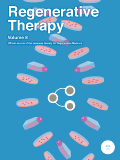
Regenerative Therapy
Transforming discoveries into impactful solutions in regenerative medicine.Regenerative Therapy is a premier open-access journal dedicated to advancing the fields of biomaterials, biomedical engineering, and developmental biology. Published by Elsevier in Japan, this journal has been an influential platform since its inception in 2015, contributing significantly to the global discourse on regenerative medicine. With an impressive Q2 ranking in major categories such as Biomaterials and Biomedical Engineering, it is recognized for its quality of research and innovation. Researchers seeking to disseminate their findings or explore cutting-edge developments will find Regenerative Therapy to be invaluable, reflecting current trends and fostering collaborations across interdisciplinary boundaries. The journal offers open access, ensuring that high-quality research is available to a broad audience and enhances the impact of scholarly work in the regenerative medicine community.
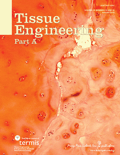
Tissue Engineering Part A
Exploring Cutting-Edge Research in Tissue EngineeringTissue Engineering Part A is a prestigious peer-reviewed journal published by MARY ANN LIEBERT, INC that focuses on innovative research and advancements within the field of tissue engineering and regenerative medicine. Since its inception in 2008, this journal has played a critical role in disseminating cutting-edge findings that bridge the gap between laboratory research and clinical application, underscoring its significance in the scientific community. With a diverse scope encompassing biochemistry, bioengineering, biomaterials, and biomedical engineering, the journal ranks notably in the Scopus database, holding a Q2 quartile status across multiple categories, thus reflecting its high impact on ongoing research and professional practice. For researchers, professionals, and students, Tissue Engineering Part A serves as an invaluable resource, offering insights into the latest methodologies and breakthroughs that drive the future of healthcare and therapeutic strategies. While primarily a subscription-based journal, it ensures that vital research is accessible to a broad audience of scientists and engineers committed to advancing the life sciences.
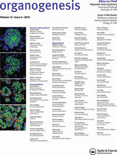
Organogenesis
Advancing the Frontiers of Developmental Biology.Organogenesis is a leading journal published by Taylor & Francis Inc, dedicated to advancing the field of developmental biology and regenerative medicine. With an ISSN of 1547-6278 and E-ISSN 1555-8592, this journal spans an extensive research scope that includes embryology, transplantation, and biomedical engineering, distinguishing itself as a crucial platform for researchers and practitioners alike. Its impact is reflected in its performance across various categories in 2023, earning Q3 rankings in Biomedical Engineering and Embryology, Q4 in Developmental Biology, and Q2 in Transplantation, showcasing its reputable standing among peer journals. Moreover, with Scopus rankings indicating strong positioning in the fields of medicine and biochemistry, Organogenesis is essential for those looking to publish or stay updated on pioneering research. The journal facilitates rigorous peer-review and offers a forum for disseminating innovative findings, making it an invaluable resource for academics, professionals, and students committed to understanding the complexities of organism development.

Cell Regeneration
Advancing the Frontiers of Cellular DiscoveryCell Regeneration, published by SPRINGERNATURE, stands at the forefront of biological research, focusing on the dynamic field of cellular development and regenerative biology. Since its establishment in 2012, this journal has embraced an Open Access model, facilitating widespread dissemination of key findings and fostering collaboration among researchers in the Netherlands and beyond. With an impact factor underscoring its significance, Cell Regeneration is positioned in the Q2 category in both Cell Biology and Developmental Biology as of 2023, ranked #32 out of 82 and #170 out of 285 in relevant Scopus peer fields. The journal encompasses a broad spectrum of research that advances our understanding of cellular processes, offering vital insights into regenerative mechanisms and their applications in therapies. This robust platform not only serves as a valuable resource for researchers, professionals, and students but also encourages scholarly dialogue and innovation in the fast-evolving landscape of cell biology.
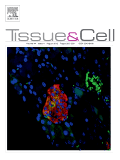
TISSUE & CELL
Unveiling the Mysteries of Cells and TissuesTISSUE & CELL is a prominent academic journal, published by CHURCHILL LIVINGSTONE, that has been at the forefront of research in the fields of cell biology, developmental biology, and miscellaneous areas of medicine since its inception in 1969. With a strong focus on high-quality research, TISSUE & CELL has established itself within the academic community, holding a Q3 ranking in both Cell Biology and Developmental Biology, and a Q2 ranking in Medicine as of 2023. The journal aims to disseminate significant findings that contribute to the understanding of tissue structure and function, helping to bridge the gap between basic biological research and clinical applications. While it operates on a subscription basis and does not currently offer Open Access options, the journal remains a vital resource for researchers, professionals, and students interested in cutting-edge developments in the biological sciences. The journal's address is located in the scenic city of Edinburgh, further establishing its academic heritage in the United Kingdom.
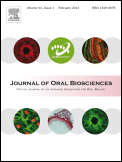
Journal of Oral Biosciences
Transforming Knowledge into Practice in Oral HealthJournal of Oral Biosciences is a premier open-access journal dedicated to advancing the field of oral health and bioscience, published by Elsevier. Established in 2004, this journal has garnered a reputation for excellence, achieving a 2023 impact factor that reflects its significance in the realms of Biochemistry, Genetics, and Molecular Biology as well as Dentistry and Medicine, with impressive Scopus rankings placing it within the top quartiles of its categories. This journal aims to foster interdisciplinary research and provide a platform for innovative studies that enhance our understanding of oral biosciences, including molecular mechanisms and clinical applications. With its open-access model launched in 2013, the Journal of Oral Biosciences ensures that cutting-edge research is readily available to a global audience, thus facilitating collaboration and knowledge dissemination among researchers, professionals, and students.